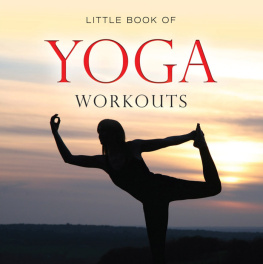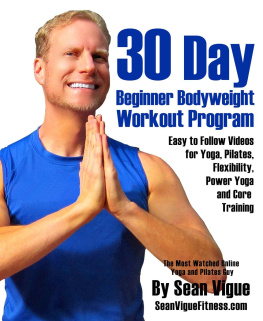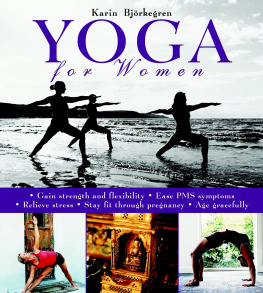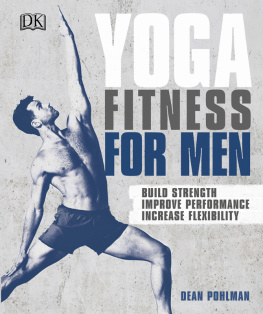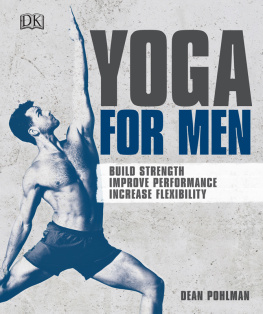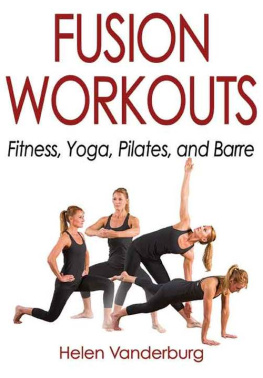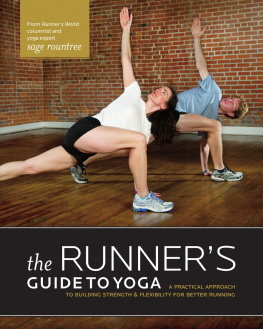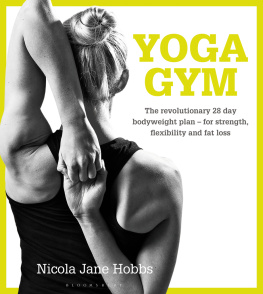LITTLE BOOK OF
YOGA
First published in the UK in 2013
Demand Media Limited 2013
www.demand-media.co.uk
All rights reserved. No part of this work may be reproduced or utilised in any form or by any means, electronic or mechanical, including photocopying, recording or by any information storage and retrieval system, without prior written permission of the publisher.
ISBN 978-1-782811-80-0
eISBN 978-1-78281-174-9
The views in this book are those of the author but they are general views only and readers are urged to consult the relevant and qualified specialist for individual advice in particular situations.
Demand Media Limited hereby exclude all liability to the extent permitted by law of any errors or omissions in this book and for any loss, damage or expense (whether direct or indirect) suffered by a third party relying on any information contained in this book.
All our best endeavours have been made to secure copyright clearance for every photograph used but in the event of any copyright owner being overlooked please address correspondence to Demand Media Limited, Waterside Chambers, Bridge Barn Lane, Woking, Surrey, GU21 6NL
In no way will Demand Media Limited or any persons associated with Demand Media be held responsible for any injuries or problems that may occur during the use of this book or the advise contained within. We recommend that you consult a doctor before embarking any exercise programme. This product is for informational purposes only and is not meant as medical advice. Performing exercise of all types can pose a risk, know your physical limits, we suggest you perform adequate warm up and cool downs before and after any exercise. If you experience any pain, discomfort, dizziness or become short of breath stop exercising immediately and consult your doctor
Contents
Introduction
Originating in ancient India, yoga is a commonly known generic term for the physical, mental and spiritual practices or disciplines that have the sole aim of creating a state of permanent peace. Yoga, specifically, is one of the six orthodox schools of Hindu philosophy. Different traditions of yoga can be found also in Buddhism, Jainism and Sikhism.
Hindu monks brought yoga, particularly what is known as Hatha yoga, to the western world in the late 19th century and it became a popular method of physical exercise during the 1980s.
Apart from the spiritual goals, the physical postures of yoga are used to alleviate health problems, reduce stress and make the spine supple in contemporary times. Yoga is also used as a complete exercise programme and physical therapy routine.
Pilates is a physical fitness system developed in the early 20th century by Joseph Pilates whose concept was intended to strengthen the human mind and body. Pilates believed that mental and physical health is interrelated. It is an extremely popular method of exercise all over the world. Pilates called his method Contrology from the word control.
The techniques employed for pilates builds up flexibility, muscle strength, and endurance in the legs, abdominals, arms, hips and back. It puts emphasis on spinal and pelvic alignment, breathing and developing a strong core, as well as improving coordination and balance. The pilates method allows for different exercises to be modified in range of difficulty from beginner to advanced. Intensity of exercises can therefore be increased over time as the body conditions and adapts to the exercises.
Yoga and pilates is for inner strength and outer radiance.
The exercises here have been carefully selected by Maddy Barrington-Groves (pictured throughout) and are a fusion of the best aspects of yoga and pilates. They will build up core strength, improve posture, improve flexibility and range of movement, and stretches will tease out tension from the body and ease away aches and pains.
Exercises should be performed slowly and mindfully to rebalance the nervous system, to centre the mind and to increase body awareness. From regular practice, you will look and feel taller, slimmer and more confident, not to mention becoming more at ease in body and mind. You will feel more energy, vitality, and will experience more clarity of thought.
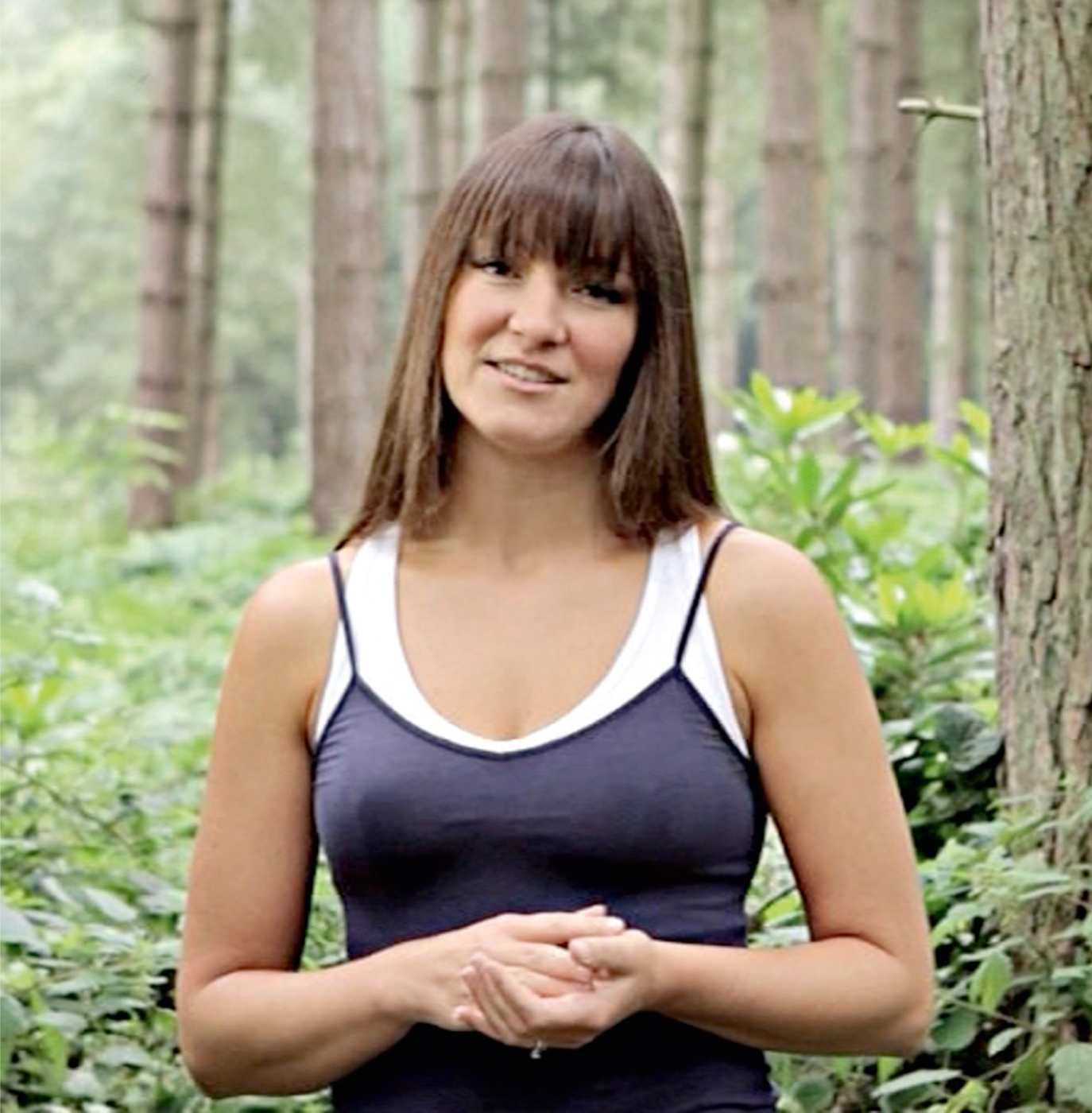
Chapter 1
Engaging the Core and Limbering Up
Stand on the mat with your feet hip width apart with feet parallel.
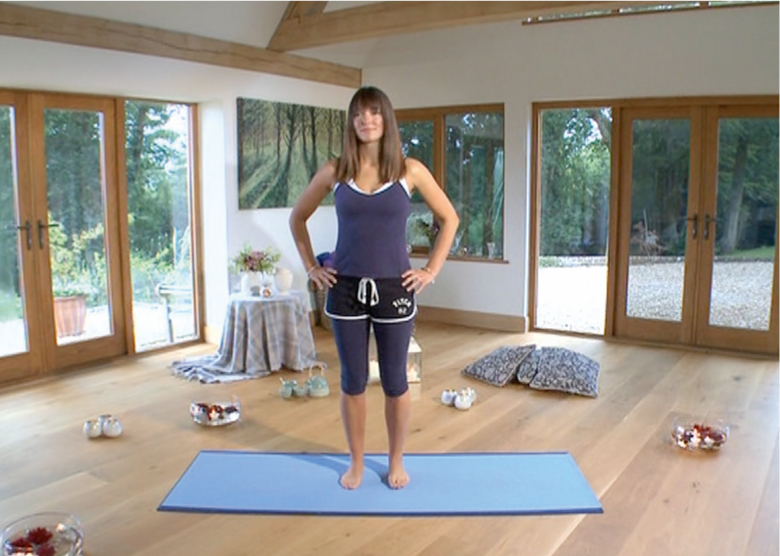
Engage the front of the thighs by lifting up on the kneecaps, lengthening through the spine standing tall, reaching up through the crown of your head.
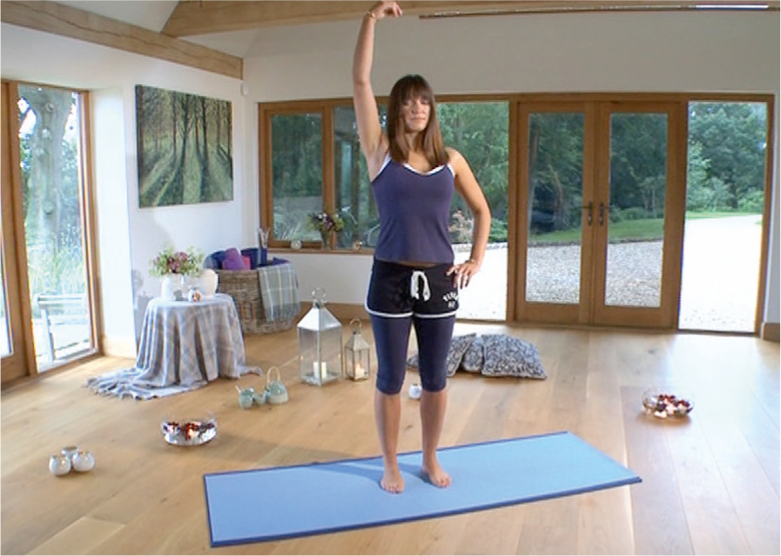
Bring the hands onto the hips and tilt the pelvis backwards and forwards until a neutral spine position is found. Make sure the pelvis isnt tilted too far either way it has to be nice and even.
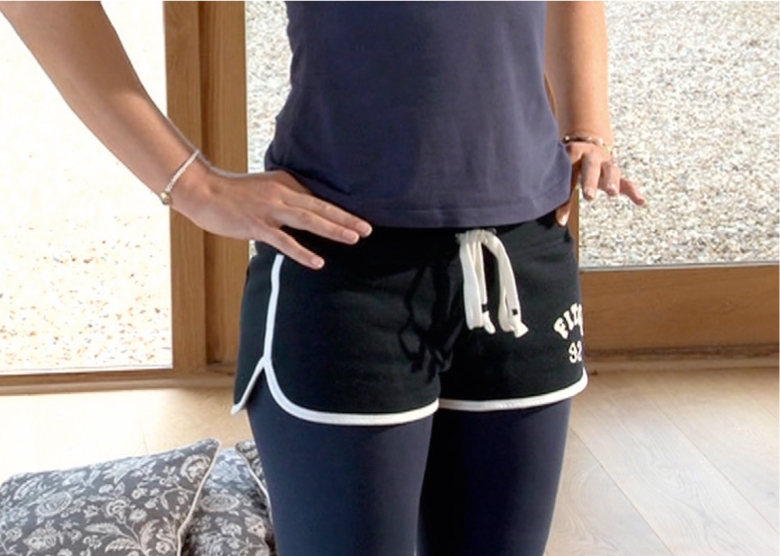
To engage the core as you breath: balloon out your belly as you inhale drawing the navel and stomach muscles back towards the spine as you exhale. Repeat this, but each time reduce the amount of contraction of stomach muscles from 100% to 50% then to 30%.
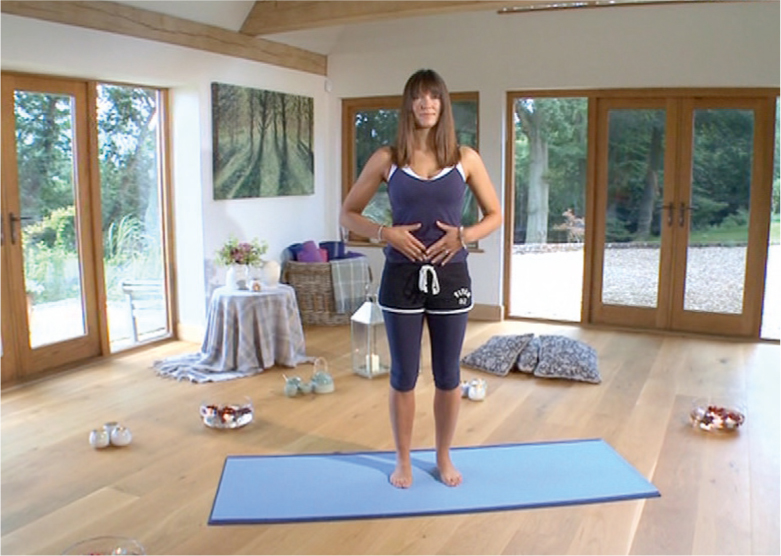
Hold them at 30% and take several long deep breaths in and out breathing each time right up into the chest. Engage the stomach muscles and pelvic floor every time you breathe up into the chest. The deep core muscles around the pelvis are engaged and the core muscles around the stomach and lower back are engaged as well. It should be a light engaging of the muscles, not a really strong contraction.
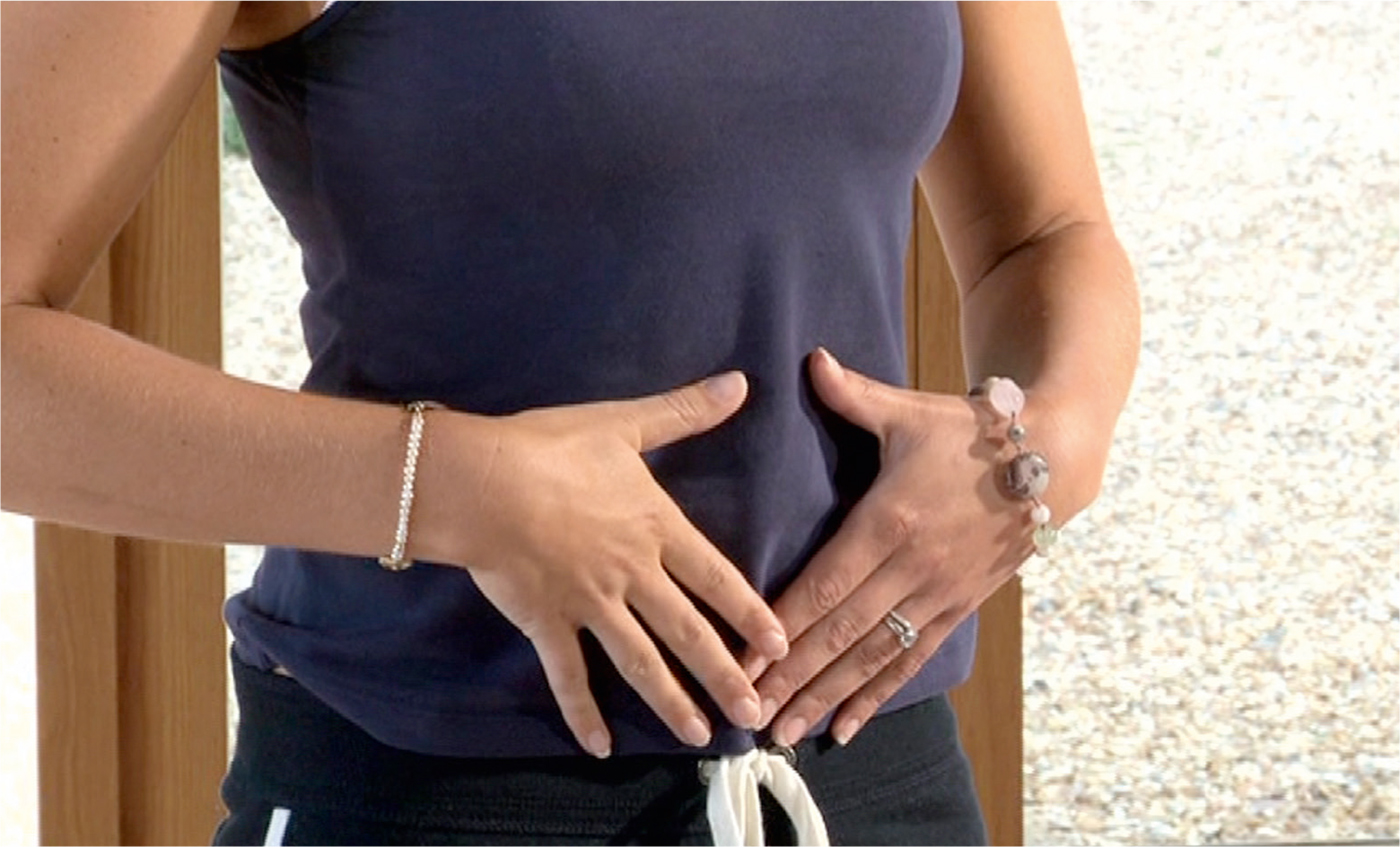
Inhale raising your arms up bringing the palms of your hands together and stretching high.
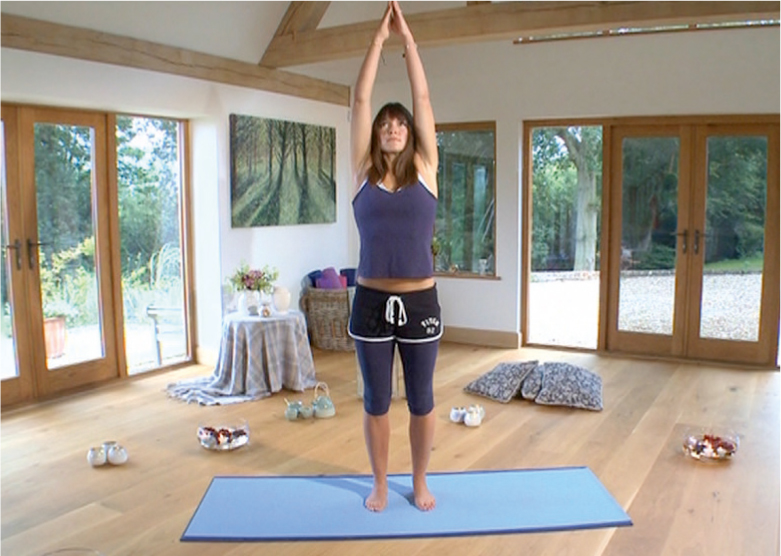
Then release the arms down. Repeat this twice more.
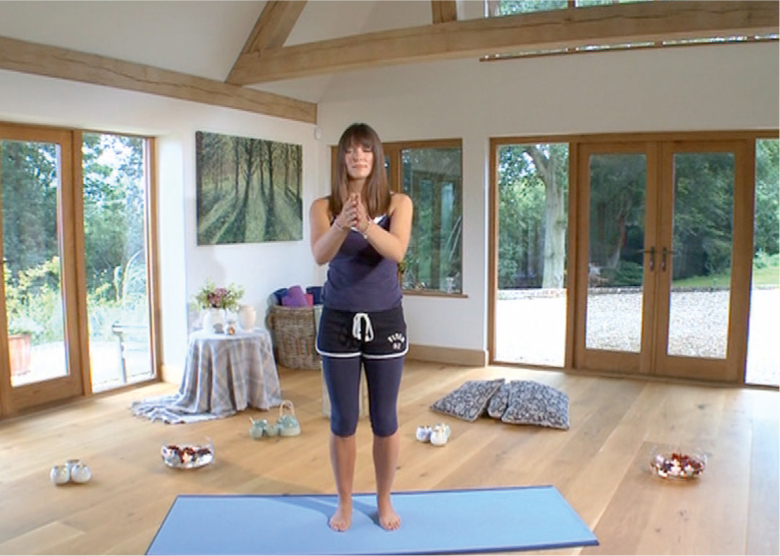
Step 1
Raise the arms up, and holding onto one wrist, stretch over to one side.
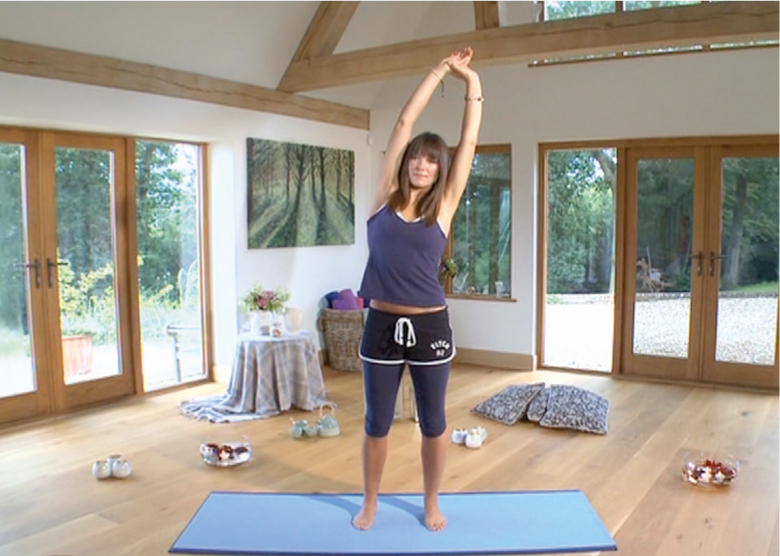
Step 2
Then holding onto the other wrist, stretch over to the other side.

Release the arms back to centre and then bring the arms back down.
Inhale raising the arms up and moving into a full body circle, circling the body all the way round, reaching up through the fingers and circling round folding forward letting the head relax at the bottom. Repeat four times.

